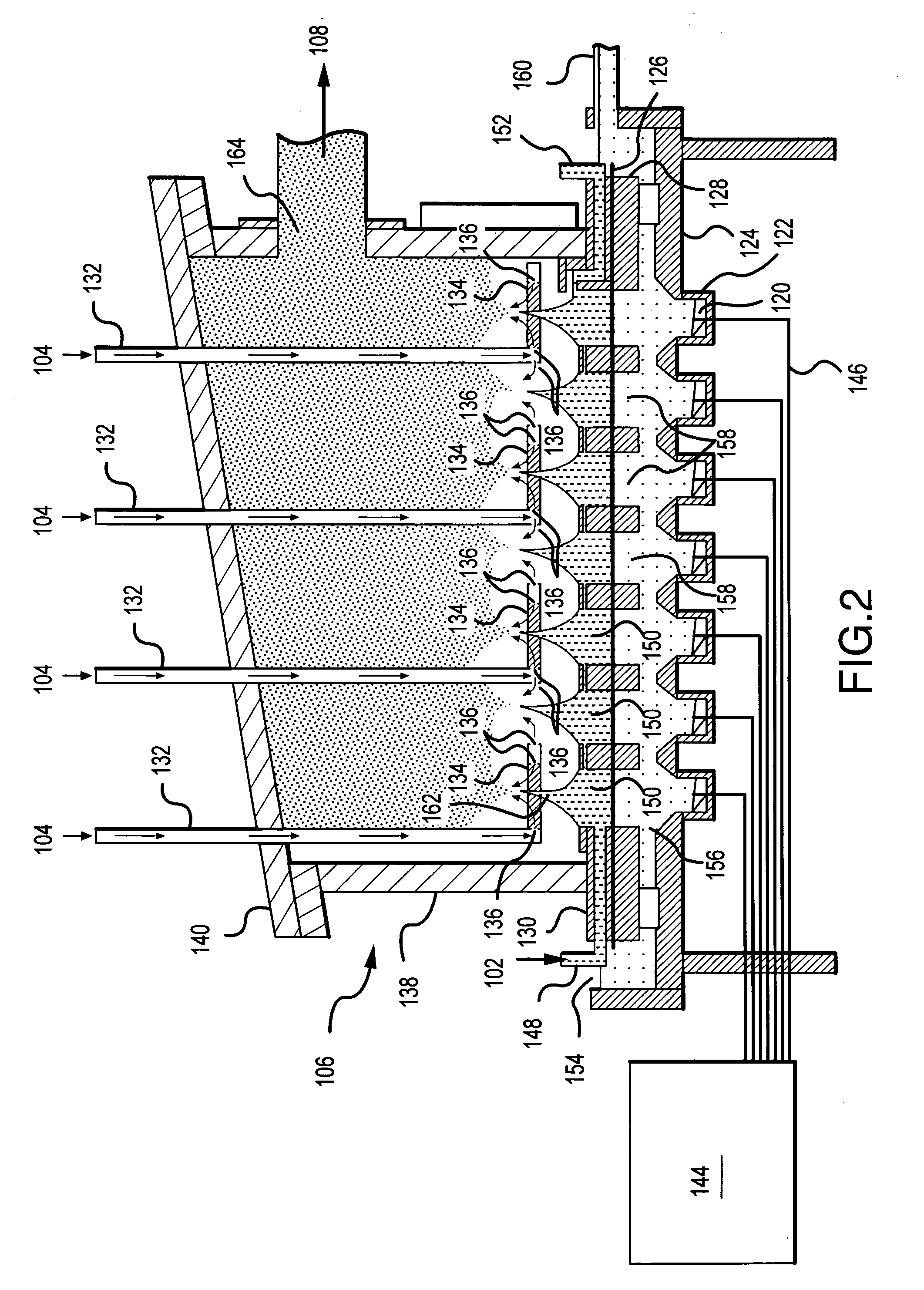Electroluminescent phosphor powders, methods for making phosphor powders, and devices incorporating same
a technology of phosphor powder and electrolyte, which is applied in the direction of fixed capacitors, chemical/physical/physical-chemical processes, chemical/physical/physical-chemical stationary reactors, etc., can solve the problems of inhibiting the brightness of phosphor powders, high luminescent intensity of phosphor powders, and long life, and achieve good crystallinity
- Summary
- Abstract
- Description
- Claims
- Application Information
AI Technical Summary
Benefits of technology
Problems solved by technology
Method used
Image
Examples
examples
[0247]A yttria powder batch was produced according to the present invention. An aqueous precursor solution was formed comprising yttrium nitrate and europium nitrate in a ratio to yield a phosphor comprising Y2O3 and 8.6 atomic percent Eu. The total precursor concentration was 7.5 weight percent based on the final product.
[0248]The liquid solution was atomized using ultrasonic transducers at a frequency of 1.6 MHz. Air was used as a carrier gas and the aerosol was carried through a tubular furnace having a temperature of 800° C. The total residence time in the furnace was about 1–2 seconds. The pyrolyzation at 800° C. resulted in intermediate precursor particles of a low crystallinity yttrium compound.
[0249]The intermediate precursor particles were then heated in batch mode at a temperature of 1400° C. for 60 minutes in air. The heating ramp rate was 10° C. / minute.
[0250]The resulting powder is illustrated in the SEM photomicrograph of FIG. 40. The particle size distribution is illus...
PUM
| Property | Measurement | Unit |
|---|---|---|
| particle size | aaaaa | aaaaa |
| crystallite size | aaaaa | aaaaa |
| weight average particle size | aaaaa | aaaaa |
Abstract
Description
Claims
Application Information
 Login to view more
Login to view more - R&D Engineer
- R&D Manager
- IP Professional
- Industry Leading Data Capabilities
- Powerful AI technology
- Patent DNA Extraction
Browse by: Latest US Patents, China's latest patents, Technical Efficacy Thesaurus, Application Domain, Technology Topic.
© 2024 PatSnap. All rights reserved.Legal|Privacy policy|Modern Slavery Act Transparency Statement|Sitemap



